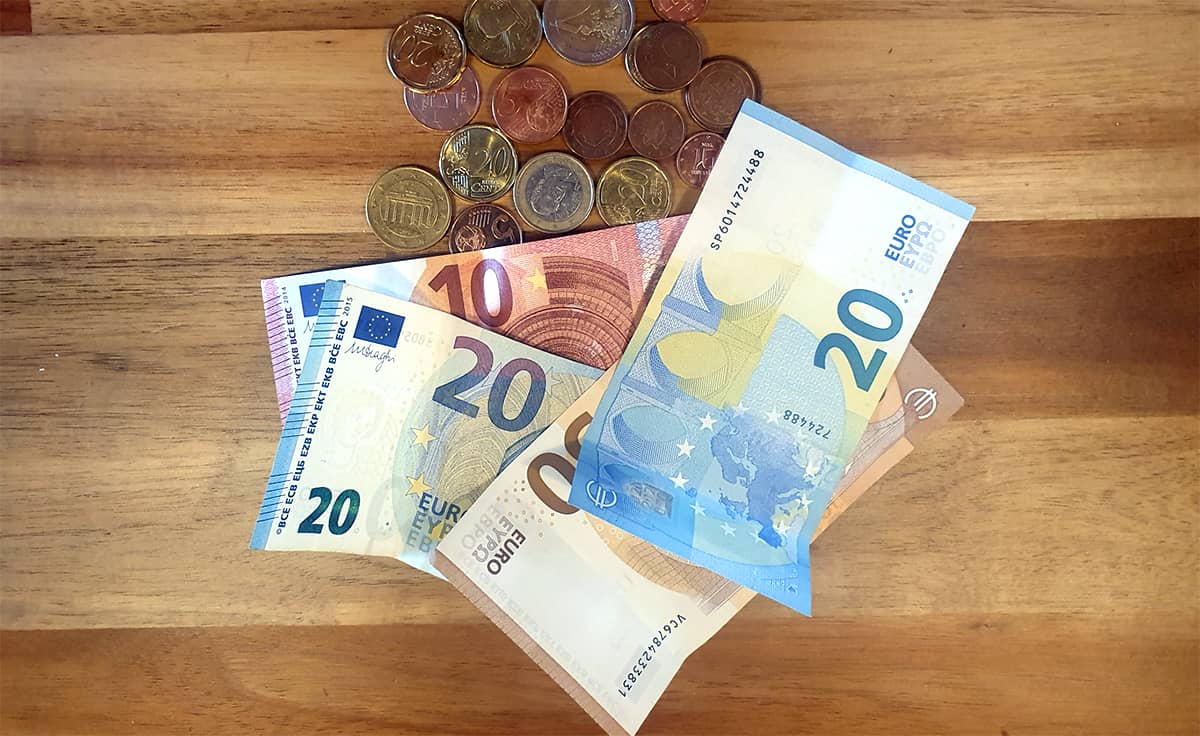The question many visitors have is what money you should take when travelling to Croatia. Croatia's unit of currency is Euro (code EUR, sign: €). Coins come in denominations of 1, 2, 5, 10, 20 and 50 cents, and 1, 2 Euro. There are notes of 5, 10, 20, 50, 100, 500 Euro.
You can pay in Euro at any place or for any service or product you use. Be sure to establish the method of payment in advance if you wish to pay in any other currency than Euro.
What is the Current Euro Exchange Rate?
Exchange rates fluctuate often, so we’ve included resources below to help you compare the Euro with currencies like the British Pound and US Dollar for everyday purchases. For the most accurate and up-to-date information, visit the Croatian National Bank's website. Note that while the official exchange rate is listed there, commercial banks and exchange offices may apply their own market rates.
Obtaining Euros in Croatia
The Euro is the official currency of Croatia. You can exchange money before your trip or after arriving in Croatia. For the best exchange rates, it’s recommended to use banks or ATMs rather than hotel services or Exchange offices, which often come with higher fees. Before traveling, check with your bank regarding international transaction fees and confirm that your card works with Croatian ATMs to ensure a smooth experience and get the most value during your visit.
Banks (banka) are generally open Monday to Friday 8.00 AM - 7.00 PM, and Saturday 7.30-11.30 AM. Money can also be changed in post offices, travel agencies and exchange offices (mjenjačnica), which have more flexible hours. Credit cards are generally accepted in hotels and restaurants, but be sure to ask before you order. You can also use ATM to get cash. Many banks have ATM machines in front of their building.

ATMs in Croatia
ATMs linked to international networks are widely accessible in all major Croatian cities such as Zagreb, Split, Dubrovnik, Rovinj, and Zadar, as well as on popular islands like Mljet, Korčula and Hvar. However, smaller towns and remote villages may not have ATM facilities, so it's advisable to plan ahead. Visa and MasterCard are broadly accepted in tourist areas, but carrying some cash is recommended when exploring less-traveled destinations.
Read more about Post offices, banks and ATMs in Dubrovnik
Using the ATMs and safety
When a foreign card is inserted into the ATM machine, there is usually a choice of languages. The exchange rate you'll receive will be far, and there may only be a small service charge, which depends on your bank back home. You can check this with your bank before travelling. Local banks sometimes also charge an operating fee on top of this. You will need your four-digit PIN to access the machine's information or withdraw money.
WARNING: When approaching the ATM machine make sure that the card reader looks normal, there have been cases of card frauds in Croatia when a card skimmer was being used. If in doubt you can always go to the nearest bank and make your cash withdrawal.
Currency and cash to use in Croatia
In Croatia, payments in shops, restaurants, and other commercial establishments are made exclusively in euros. Visitors from outside the euro area are encouraged to use debit or credit cards, contactless payment apps, or cash (Euro). Payment methods are usually clearly displayed, so it’s advisable to check them before making a purchase to ensure a smooth transaction.
Bitcoin ATM in Dubrovnik
A Bitcoin ATM in Dubrovnik is located at Ul. kralja Tomislava 7, next to the DM drugstore at the shopping center "DOC". It facilitates private cryptocurrency transactions.
Location of Bank Offices in Dubrovnik
Currency in Croatia FAQ's
Is the euro accepted in Croatia?
What is the best currency to take to Croatia?
Is Croatia an expensive destination?
How much is $100 in Croatia?
Are there many ATM's in Croatia?
How to lower ATM fees in Croatia?
How much money do I need for one week in Croatia?
Is it better to have cash in Croatia?
Discover more about Croatia's currency and money tips while visiting: Croatia Currency and Money: All you need to know
